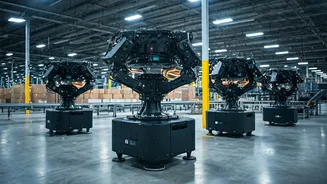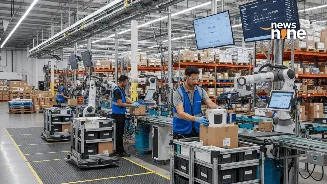Robots Take Over
Amazon's ambitious plan involves replacing more than 500,000 human jobs with robots. This massive deployment of automation signals a significant transition
within the company. This initiative aims to streamline operations, enhance efficiency, and potentially reduce labor costs. The move underscores Amazon's commitment to leveraging technology to optimize its business model, reflecting a broader trend of automation reshaping various industries. The scale of the planned job replacements highlights the considerable scope of this transformation.
Impact on Workforce
The automation push by Amazon is projected to have a profound impact on its workforce. Over half a million employees could potentially see their roles altered or eliminated due to the introduction of robots. This transformation is expected to affect roles across various departments, including warehousing, logistics, and delivery. It's plausible that there will be a need to retrain or redeploy a large number of employees as a result of the technological advancement. The company's decision will likely influence the employment landscape and the future of work, calling for strategic responses from both businesses and policymakers to navigate these shifts.
Economic Implications
Amazon's automation strategy has significant implications that extend beyond the company itself, touching the wider economic arena. The widespread use of robotics could lead to increased productivity and potentially lower costs for consumers. However, such a move may contribute to job displacement and could negatively affect employment rates in the short term. The long-term economic effects are multifaceted, including the need for new skills and the emergence of fresh job markets. The balance between the advantages of efficiency and the possible disruption of jobs will be a key consideration as these automation changes progress.
Technological Advancements
The foundation for Amazon's automation initiative relies on innovative technological advancements. Artificial intelligence (AI), machine learning, and robotics are the cornerstones of this transition. These technologies allow robots to perform a variety of tasks, like order fulfillment, inventory management, and package delivery. Furthermore, the company may explore the use of automated guided vehicles, robotic arms, and drone technology to optimize its operations. These technological innovations will likely be crucial in shaping the future of Amazon's workforce and business structure, highlighting the pivotal role of technology in its plans.
Strategic Outlook
Amazon's automation strategy mirrors a broader trend across the industry, wherein companies are investing in automation to enhance efficiency and reduce expenditures. Amazon's actions could prompt similar strategies across the e-commerce sector. The company will need to consider the impact of its strategic changes. There will need to be strategies for worker retraining, adjustments in operational models, and addressing possible concerns related to labor. The success of Amazon's plan, along with the subsequent effects on its workers and the industry, remains to be seen.














